Photography: Llŷn Peninsula photos capture bygone way of life
 Malcolm Glover
Malcolm GloverThe Llŷn Peninsula is well known for its stunning coastline, making it a magnet in north Wales for well-heeled holiday makers and second-home owners, where a beach hut can fetch £200,000.
But an exhibition of black and white photos taken there in 1985 captures a different time.
Photographer Malcolm Glover spent six months living in a campervan on the peninsula, photographing daily life in its towns and villages.
"It just blew me away, it was partly the beauty of the place, the culture, the Welsh language," he said.
"The rest of the world was just going on, and here was life in the Llŷn Peninsula."
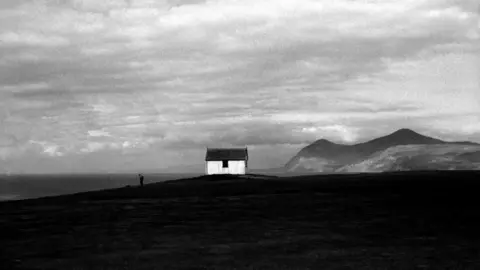 Malcolm Glover
Malcolm GloverMalcolm, 67, has been a professional photographer for more than 40 years.
It all began after he read Jack Kerouac's The Dharma Bums, which inspired him to take his camera on a hitchhiking trip around Europe.
When he returned home he decided to study photography, eventually going to Newport in south Wales, where he was taught by the influential documentary photographer David Hurn.
It was on a trip with an ex-girlfriend to Gwynedd in 1985 that he discovered the Llŷn, a designated Area of Outstanding Natural Beauty.
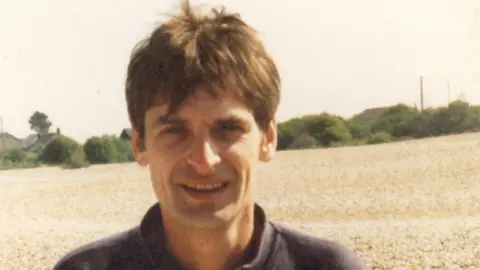 Malcolm Glover
Malcolm Glover"I just fell in love with the place and I thought 'I really want to photograph this place'," he said.
"It seemed like a hidden part of Wales to me, I just became enchanted with it...
"It also seemed to me at that time it was about 20 or 30 years behind."
The now defunct Welsh Development Agency commissioned him to take photos of life on the peninsula for a calendar.
He used the money to buy a VW Camper and a 125cc motorbike, parked at a car park in Morfa Nefyn close to some public toilets and got to work.
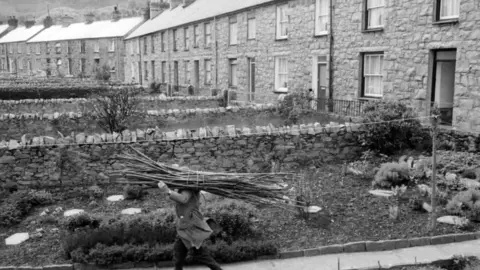 Malcolm Glover
Malcolm GloverMalcolm, who was brought up in Crawley, West Sussex, and now lives in St Leonards-on-Sea, East Sussex, said as a non-Welsh speaking Englishman he was initially treated with suspicion.
In a bid to show what he was up to, he decided to hang prints of his photographs in local cafes.
"In the end they got used to this thin man riding around on a motorbike turning up photographing," he said. "They actually started to like it."
Before long a local potter suggested he move his campervan onto his land and people began suggesting people and places for him to photograph.
 Malcolm Glover
Malcolm GloverOne of his pictures shows a brass band performing and a man sitting with his back to them with his hands over his ears.
"You're always looking for kind of little moments that at the time can be quite unexpected," he said.
"That guy just came up and sat on the stage there with his fingers in his ears and stayed there for about 20 minutes, half an hour, and for me that was just a very kind of amusing image, I just love that photograph."
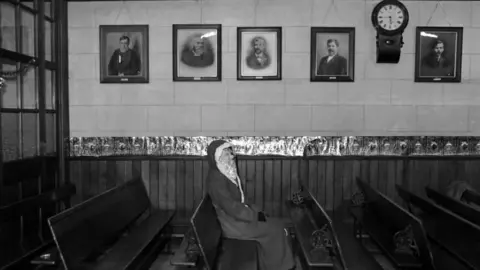 Malcolm Glover
Malcolm GloverAnother image shows a man dressed as Father Christmas, sitting on a pew in an empty church in Tudweiliog.
Malcolm said he came across the man by chance, who told him he was waiting to go into a children's Christmas party.
"I love [the photo] with the juxtaposition of the church elders above him as well," he said.
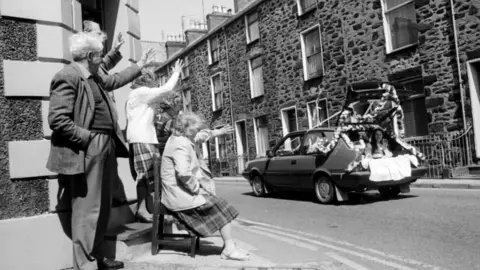 Malcolm Glover
Malcolm GloverOne of Malcolm's photos shows people waving at a carnival queen who is being driven around Pwllheli in an open car boot.
"Could you imagine that now [with] health and safety?" said Malcolm.
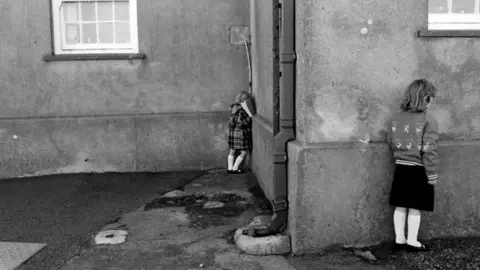 Malcolm Glover
Malcolm Glover"My work is very much about people and how they react to their social conditions and to each other," he said.
"The people living there, I felt, were in their own world living there and their life was the Llŷn Peninsula."
Malcolm's photos were taken in the same year as the miners' strike, which ended after 362 days on 3 March 1985.
"I was capturing this moment in time, and I was very aware of the onslaught of what was going on with Thatcher at the time - I thought 'this is going to start to impede into the way of life on the Llyn Peninsula'," he said.
 Getty Images
Getty ImagesToday, the Llŷn, often dubbed the Welsh Riviera, is at the heart of what some describe as Wales' second-homes crisis.
The county of Gwynedd, which includes the peninsula, has 5,098 second homes, a fifth of Wales' total, and one in 10 houses in the area is a second home.
Under the broader definition of second homes - to include holiday lets - these made up 46% of homes in the village seaside resort of Abersoch, according to figures from 2020.
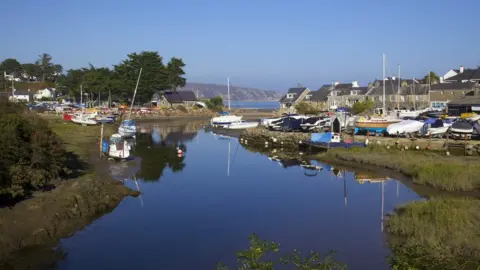 Getty Images
Getty ImagesProtesters say local people are being priced out of the area they grew up in and the Welsh language is under threat.
Local authorities in Wales have already been given the power to increase council tax on second homes by 300% from next year.
Some holiday home owners have previously said they fear running holiday lets will become impossible.
One Conservative Member of the Senedd has referred to the legislation as "using a sledge hammer to crack a nut".

Malcolm said when he reads about the peninsula's sometimes ritzy reputation it feels very far away from the place he photographed.
"It was another time, that was another world," he said. "What's going on at the moment with the money that's being sloshed around, I just can't relate to it, it's just madness."
But he said even back in 1985 he could see the impact of second-home ownership.
He recalled a conversation with a woman in Abersoch who had recently moved into a new housing estate.
"She said it was a really thriving community, but what she hadn't realised before she moved there was when winter came there were only three houses occupied," he said. "That is outrageous to me."
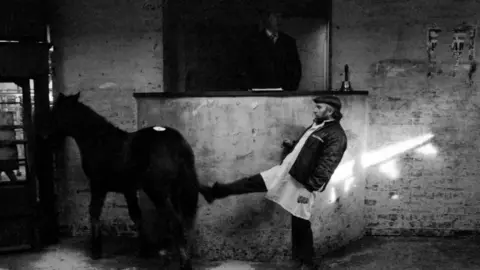 Malcolm Glover
Malcolm GloverThe calendar Malcom's photos were intended for never saw the light of day, but his work was shown in Wrexham as part of a UK tour in the mid-'80s.
He said he had always hoped to "bring the work back home to Wales".
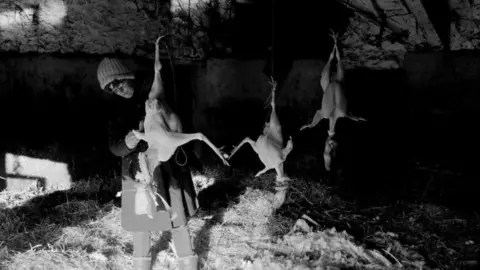 Malcolm Glover
Malcolm GloverWhen the photos were recently published in a book of his work, Malcolm decided to contact some Welsh galleries, which led to the upcoming exhibition at Oriel Colwyn in Colwyn Bay.
"I really hope that people looking at those pictures now will relate to them and feel that I've captured the essence of a way of life on the Llŷn Peninsula," he said.
Llŷn Peninsula will be on show at Oriel Colwyn from 2 August to 25 September.
